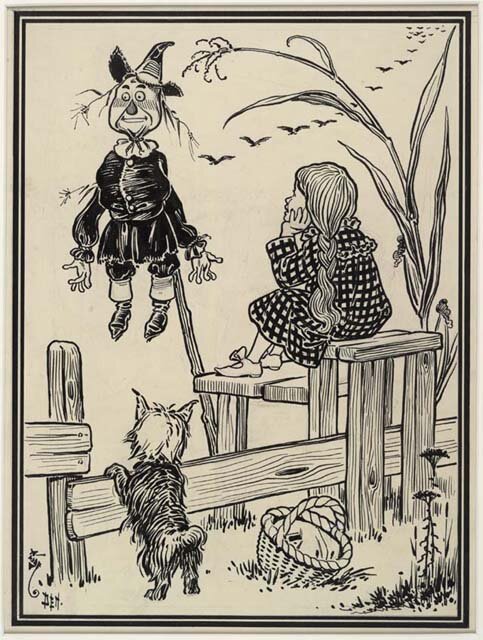The Modern-Day Scarecrow
When we talk about scarecrows, a few images probably come to mind. Maybe you think of Halloween decorations, or the Batman villain, or the dancing scarecrow with a head all full of stuffin’ in the Wizard of Oz.
As it turns out, the idea of a scarecrow - of putting a mannikin in the fields and orchards to scare away birds -- goes back over 3,000 years, if not longer, and was developed independently by ancient farmers all around the world, to the Egyptian farmers trying to keep quails out of their wheat fields, to the Japanese farmers trying to protect their rice crops, and to the turnip-headed Hay-Mans that dotted the Great Britain countryside.
Now that it’s cherry and berry season, we got to wondering: what does a modern-day scarecrow look like? How does a farmer, today, scare away all the birds from their delicious crops of cherries, raspberries, blueberries and more.
Here at Farm to City, we really wanted to know: what is the 21st Century scarecrow?
Squawk!
Just about every farmer we contacted told us that they either tried, or they still use, squawk boxes.
We never heard of squawk boxes before, but the farmers quickly explained how they worked. They’re basically a stereo system that the farmers plant around the orchard, usually four speakers to each squawk box, each speaker facing a different direction, that plays -- for hours -- the sounds and songs of predator birds.
There seem to be several different kinds, each with their own supposedly proven formula of squawks. The most sophisticated ones put out random variations of bird calls to keep the berry-bandits away during the day, and then switch to different sounds at night to keep away the deer.
“We turned them on last week when the blueberries started turning blue,” said Mike Nelson of Fruitwood Farms in Monroeville, NJ. “We run them from dawn til dusk, and the anti-deer box from dusk to dawn.”
“The problem is, the birds get used to it, so it’s best to mix up the sequence of calls every now and then,” adds Mike.
According to Anita Hepler from McCann’s Farm in Elk Township, NJ, she grew up using netting to protect their family’s blueberry crop.
“That got to be a real pain because you got to take the netting off to pick. It’d always get caught in the bush and then you had to put it back on when you’re done. That’s how my father and uncle did it for years.”
But now they too use these squawk boxes.
“We run our squawk box all the time,” she said. “I can hear it all night from my house.”
Introducing Tube Man
“We’ve used the squawk boxes in the past,” said Steve Frecon from Boyertown, PA, “but it was too repetitive and the birds got used to it. We’ve also used netting, Mylar strips, and laser lights but the most effective are the Sky Dancers.”
Sky Dancers?
You’ve probably seen them before, those tall, inflatable, dancing figures, usually found at gas stations and car dealerships and big store grand openings. The name Sky Dancers refers to a specific brand of inflatable tubes but we’ve also heard them referred to as simply big balloon men or, our favorite, the Tube Man.
“We turn them on when the cherries go from a straw color to pink, or blush,” said Steve. “We have three of them in use right now and I’m trying to buy three more.”
The Once-Every-Seventeen-Years Kind of Scarecrow
Beechwood Orchards from Biglerville, PA, is the largest orchard that comes to Farm to City markets. They grow everything under the sun: strawberries, apricots, cherries, berries, peaches, apples, pears, even kiwi!
We were very curious what a big farm like Beechwood uses to keep the birds away.
“We use bird netting on the strawberries but stopped using it for cherries,” Melissa Garretson said. “We find netting to be too heavy for the trees. And we’ve tried the big balloon men too.”
“And reflector tape,” she said with a sigh. “Nothing works after a while.”
Then Melissa clued us in on this year’s special secret: cicadas.
“This year, honestly, the biggest help are the cicadas. We have them everywhere here. I think the birds are getting full on the cicadas – which are easy targets – and leaving most of the berries and cherries alone.”
Lastly, If You Can’t Beat Them…
Most of the other farmers we spoke to shared similar stories when it comes to bird protection. One of the most common refrains was that nothing really works for a long time. Eventually the birds will get used to anything and then go right back to feasting on all those cherries and berries.
“I decided not to fight them anymore,” said Lem Christophel of Eden Garden Farms, “so now we just grow enough for everybody.”






